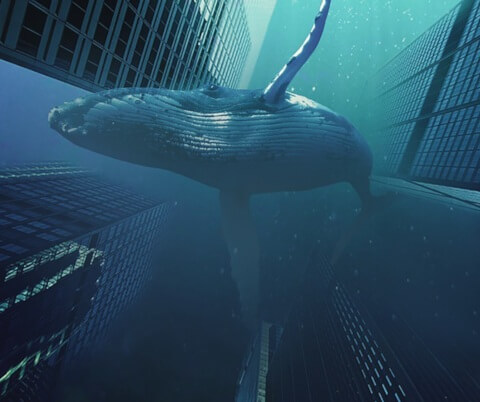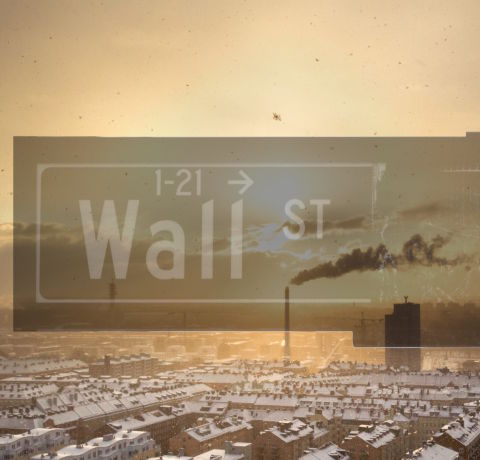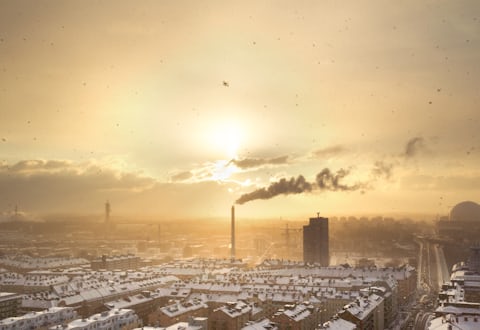The truth about Canada's emissions
Vegan Society of Canada News
January 4th 2021
New research has come to light while most of us are focused on the pandemic. In a recent report, the World Meteorological Organization had some sobering projections. They forecast that we have a 24% chance of exceeding 1.5 degrees Celsius before 2024 with a 3% chance that the average from 2020 to 2024 will exceed 1.5 degrees Celsius and a 70% chance that a single month will exceed 1.5 degrees Celsius.
It is a stark reminder that the climate change agreements have been, so far, nothing more than words, with little to no action behind them. It will be extremely difficult without drastic changes to remain below 1.5 degrees Celsius; not doing so is not an option.
We have discussed climate tipping points several times before, and there are many researchers in this area, since understanding them is crucial in trying to model the future impact of our present foolishness. New research has shed light on some of those tipping points, and unfortunately it finds that we may have already crossed some of them.
They modelled two different scenarios; the first one assumes our emissions peak in 2030 and we achieve net-zero in 2100, which is regrettably the scientific consensus of the most likely outcome of our procrastination. The second scenario is one where we would achieve net-zero emissions this year in 2020. Below are the results of these simulations.

Figure 1: Simulation of various outcomes under 2 different scenarios.
As we can see, regardless of the scenario the temperatures keep rising. Their simulation modelling is a reduced complexity earth system, so the absolute values are not so much important as the slope of the curve. Furthermore, to verify their work they created other simulations using various other assumptions for variables with higher degrees of incertitude with always the same results: Temperature keeps increasing. In order to stop this dangerous climate loop, they calculated that not only would we have to achieve net-zero emissions in 2020, but also to globally remove at least 33 gigatonnes of equivalent carbon dioxide (GtCO2e) per year. This is technically feasible but would be very expensive. Like most problems, the longer we wait the more difficult it will be to fix once we stop talking and start acting.
As the science gets more and more clear, it is difficult for people to deny human animals caused climate change. However, most of the climate denialists of the past have now switched to the much more dangerous form of climate denial: do nothing. We say we believe in climate change, that we understand most of it is due to humans, and we understand what is necessary to stop it, but we either do nothing, we do things with little or no impact, or we steer the focus away from doing things that would have a significant impact.
A good example of this climate change fantasy are those where we change absolutely nothing in our behaviour yet all our problems are supposed to magically vanish. One of those dreams that was discussed was the massive planting of trees globally thinking that the forest would save us all. It was rapidly debunked by the scientific community. To make matters worse, as extraordinary as it may sound, we managed to turn our forests into net carbon emitters.
The latest Canadian National Inventory Report shows that we have somehow managed to turn our forests into net polluters. However, we would not know it just by looking at the executive summary and associated graph below reported by the Canadian government.
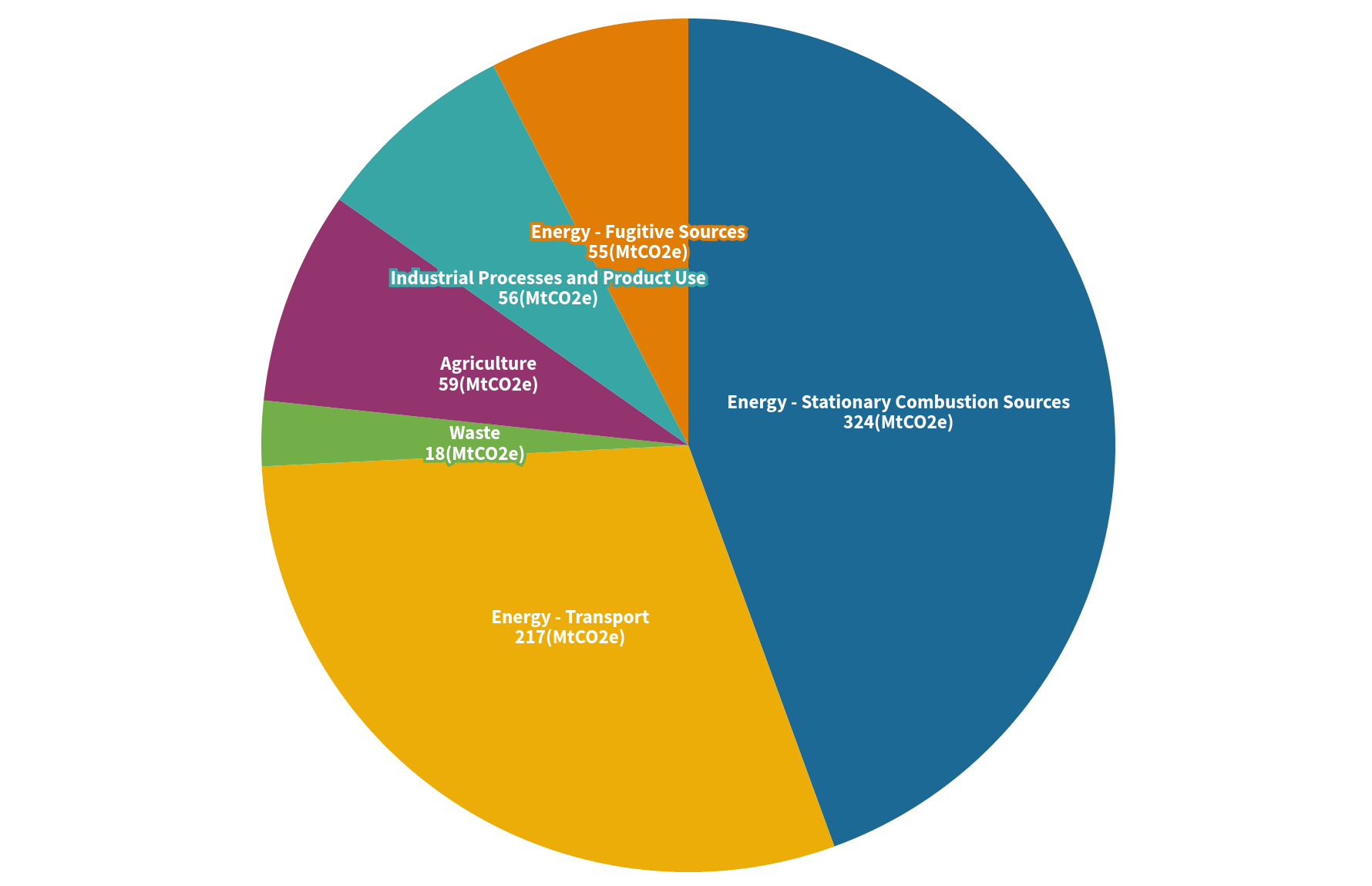
Figure 2: Breakdown of Canada’s Emissions by IPCC Sector (2018).
The reason why the main summaries reported by the Canadian government does not show the category “Land Use, Land-Use Change and Forestry” (LULUCF) as a net emitter is that Canada, seemingly against IPCC recommendation, does not take into account wildfires. The IPCC seems clear on the subject:
This section presents methods for estimating biomass gains and losses. Gains include total (above-ground and below-ground) biomass growth. Losses are roundwood removal/harvest, fuelwood removal/harvest/gathering, and losses from disturbances by fire, insects, diseases, and other disturbances.
Both uncontrolled (wildfires) and managed (prescribed) fires can have a major impact on the non-CO2 greenhouse gas emissions from forests. In Forest Land Remaining Forest Land, emissions of CO2 from biomass burning also need to be accounted for because they are generally not synchronous with rates of CO2 uptake.
However, for some reason Canada does not take into account burning when reporting the total for the category “Forest Land Remaining Forest Land” but only makes it visible separately in the full report at the bottom of the table under “Indirect CO2” and “Natural Disturbances”, as can be seen in Figure 3 below. Nevertheless, digging further into the details of the report shows the real picture:
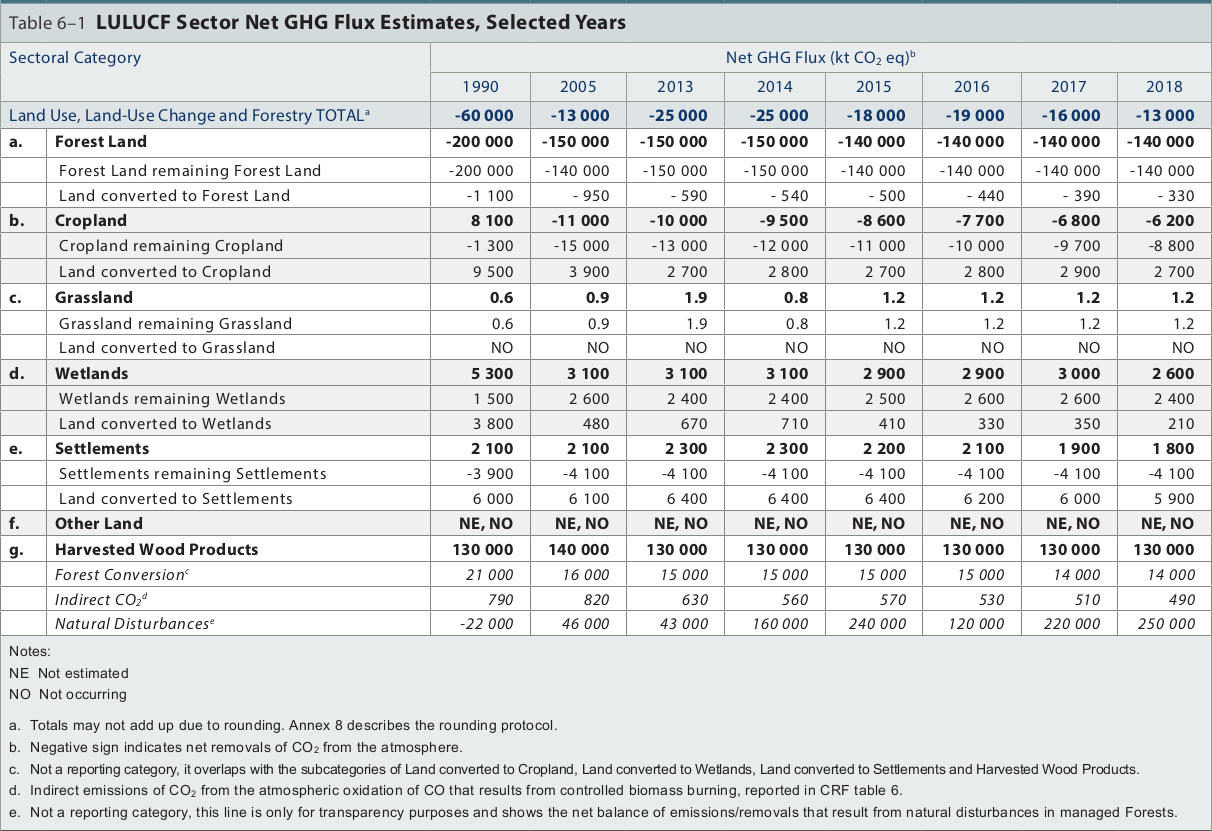
Figure 3: Land use, land-use change and forestry net flux.
Here we see that both “Indirect CO2” and “Natural Disturbances”, which are mainly composed of controlled burns and wildfires respectively, are not reported but account for 250 MtCO2e. Would this be included as it should under “Forest Land remaining Forest Land”, and therefore show up in the main report, it would be the second highest source of emissions for Canada.
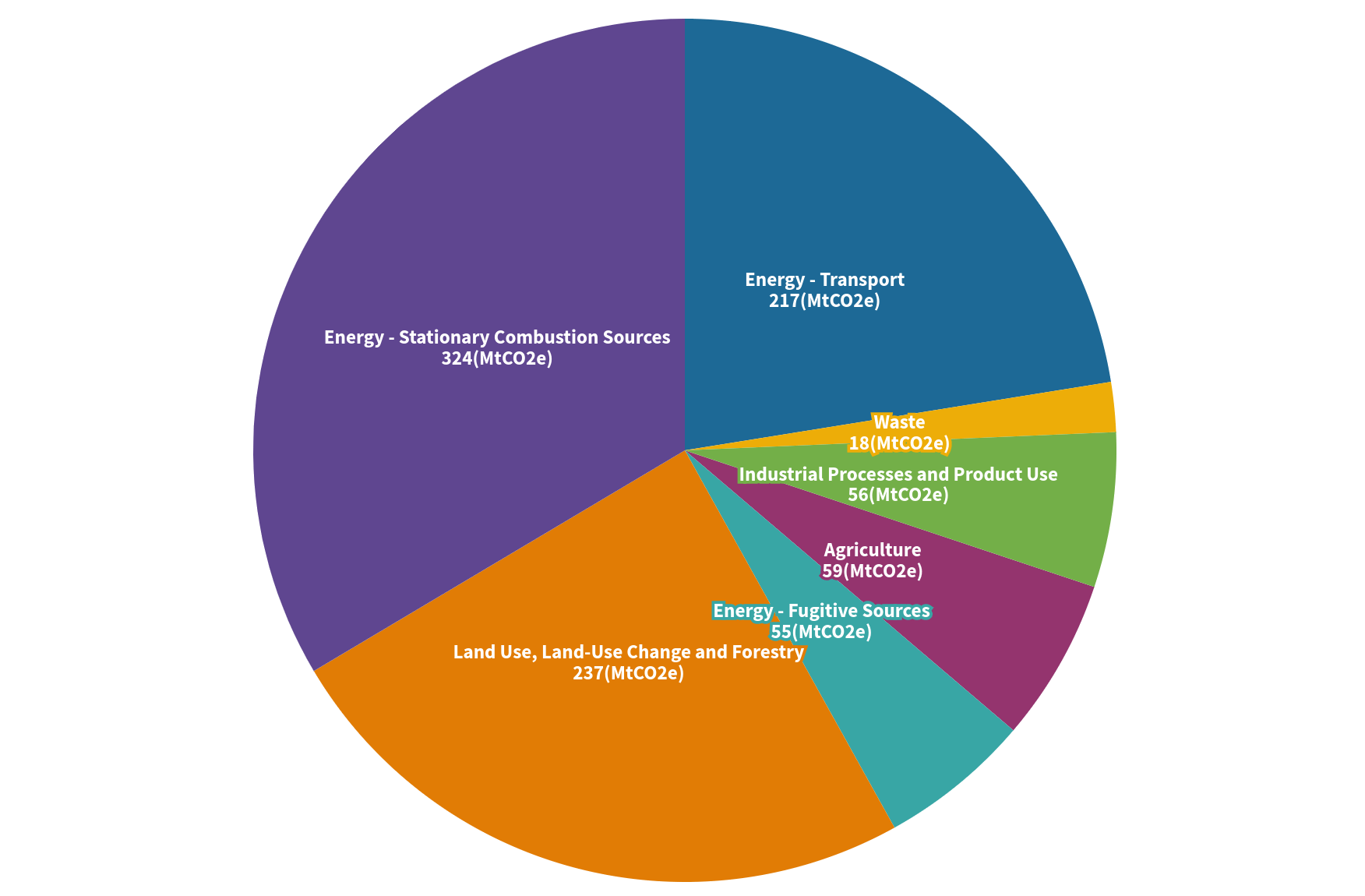
Figure 4: Breakdown of Canada’s Emissions by IPCC Sector including natural disturbances (2018).
All of a sudden, the impact of our foolishness and dangerous feedback loop of climate change becomes undeniable. The forest which should be an ally in our fight against climate change becomes one of our most toxic sectors. In addition, would this be included in our main report, the evaluation of our commitment becomes much more bleak and propels Canada into the “critically insufficient” category.
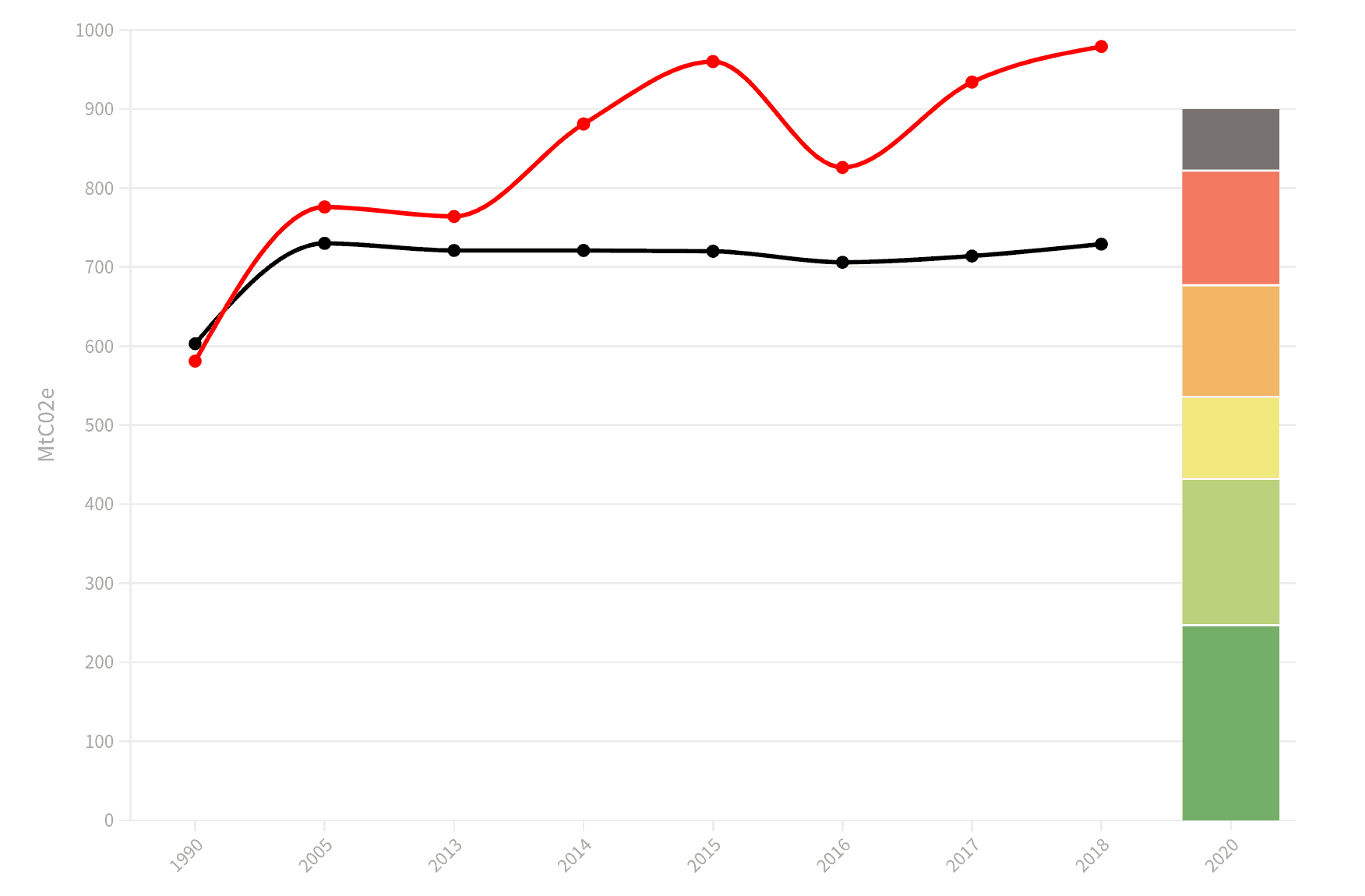
Figure 5: Updated climate action tracker country evaluation of Canada including LULUCF natural disturbances. Black line is historical emissions as reported. Red line is emission including LULUCF natural disturbances. Stacked bar represents the spectrum of commitment ranging from “role model” to “critically insufficient”.
Hiding all of this is useless, foolish and misleading. It hides the true cost of climate change. There is a scientific consensus that the increase in wildfire occurrences is largely due to human-animal-caused climate change. Furthermore, due to the vicious loop of climate change causing more wildfires, more emissions, and therefore more climate change, we would need to drastically invest in managing this risk. However, it’s unlikely to happen if we are not being honest with ourselves and hiding this from public view. Furthermore, natural disturbances mitigation strategies might be an area of our emissions where progress can easily be made.
Another issue with the current reporting is that as various carbon capture technologies are implemented, the picture would be clearer if two graphs were shared with the public: One of emission and one of carbon sinks. Therefore, it would become clear that the LULUCF sector had produced roughly 380 MtCO2e in 2018, or the highest source of emissions in Canada while the other graph would show that the forests for various reasons are capable of absorbing less and less carbon dioxide over the years, to the tune of 130 MtCO2e in 2018. These two graphs would not only help us provide a clearer picture of how net emissions come about, but they would also allow us to make better investment decisions. In the end, it does not matter whether 1 MtCO2e comes from trees or production, we simply must reduce all our emissions.
In light of this, it is unclear why the Canadian government has decided to exempt the LULUCF sector from carbon pricing. The reason often cited is because the forests also act as a carbon sink. However, in Canada, 94% of the forests belong to Canadians whereas only 6% is privately owned. Therefore, most of this carbon sink belongs to Canadians. As such, it should be up to Canadians to decide where to wisely invest their resources to either reduce emissions or increase carbon sinks, whether it is to invest in wildfire management, incentives for renewable energy, or whatever else Canadians decide as a society. If we are hiding our emissions, the temperature will keep increasing much beyond 1.5 degrees Celsius.
In addition, the rapid increase in emissions from wildfires, 684% over 1990, is a great example of the massive cost of climate change that can already be seen today in Canada. Each country will be affected by climate change in various ways. Canada, with its vast forested land, will have to deal with the consequences of our foolishness in part via increased wildfires.
If we are unable to deal with this now, it does not bode well for the future. It is our responsibility to deal with the consequences of our actions and take into account these emissions in our climate change strategies. Would Canada have to pay to maintain their emissions due to wildfires constant over 1990, the investments required to do this would not be trivial. Instead, we choose to hide some of the costs of climate change we are already facing today. Furthermore, the IPCC only requires countries to report “managed forest” which constitute only about 67% of all forest land in Canada.
The latest climate transparency report makes it abundantly clear that the G20 is not doing nearly enough to meet even the 2 degrees Celsius goals, let alone 1.5 degrees Celsius. The deceptive tactics of Canada to hide our emissions and the cost of climate change was also not lost on others:
Instead, forest degradation and forest fires are the major threats to the carbon sequestration capacity of Canadian forests. As Canada’s approach to LULUCF under the UNFCCC excludes “natural disturbance”, these substantial emissions are excluded from national accounts.
One might think that it’s not that bad as our largest neighbour is labelled as “critically insufficient” while we are merely labelled “insufficient”. However, we would be well advised to notice that what those reports mainly evaluate are the nationally determined contributions (NDC) and not actual actions. Excluding the impact of COVID-19, both the USA and Canada were tracking with actions concordant with an increase of 3 to 4 degrees celsius.
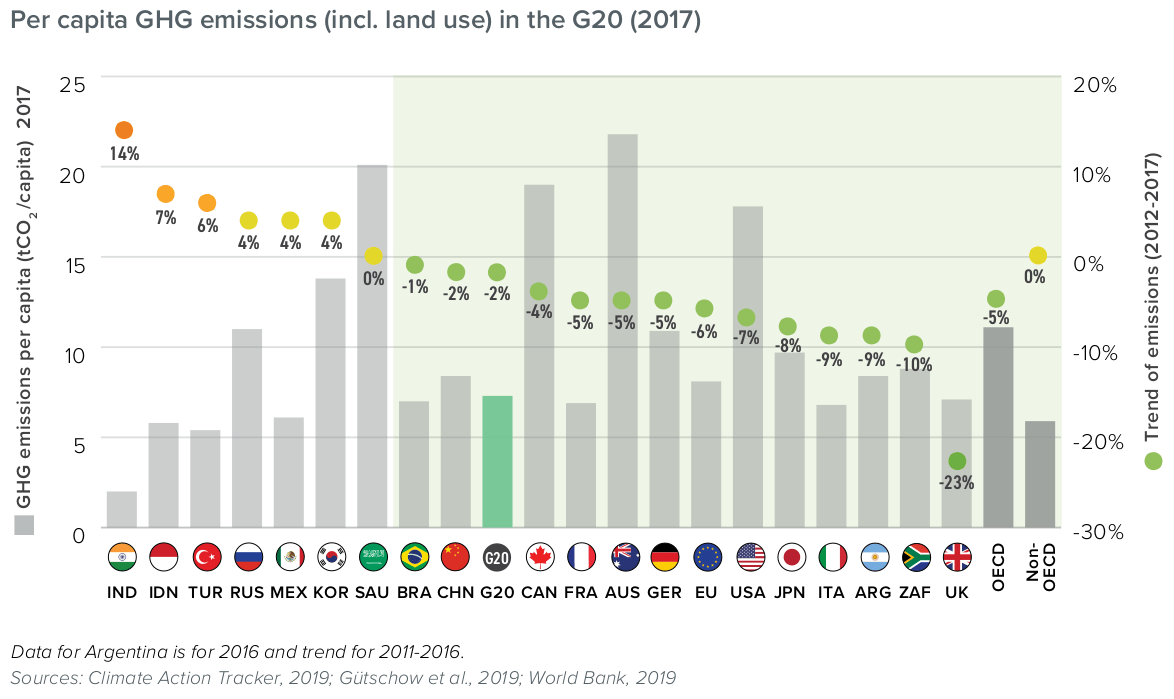
As Canadians, we have the third largest per capita emissions in the G20, and seventh in the world. It is not something we should be proud of. Achieving net-zero emissions by 2050 will be an enormous task for every citizen of the world, but especially Canadians. Decisions will have to be made as to where we are going to make cuts and where we are going to continue emitting but invest in carbon sinks to offset those emissions. There is no miracle possible, and tough choices will have to be made.
We posit that while adopting veganism may be challenging, it gives countries the maximum flexibility to redirect emissions from animal agriculture to other emitting activities that are more valuable to society. Exploitation of animals is not necessary to the thriving of our species, and the adoption of veganism will not only give countries the maximum amount of emission savings and save countless lives, but also result in a healthier population and reduce health care costs, which can also be reinvested to achieve further emission-reduction strategies.
Countries must provide a better picture of their emissions so everyone can make informed decisions as to what are the best investments to reduce those net emissions. We must also not be fooled by mere words, as the skeleton of previous climate change agreements are there in plain sight for everyone to see. There is no point in hiding those emissions because Earth will not be fooled.
A change of lifestyle offers individuals a powerful means to combat a range of issues, including personal health problems, climate change, loss of biodiversity, global acidification, eutrophication, freshwater shortages, pandemic prevention, antibiotic resistance, save countless lives and much more. We know of no other efficient way for individuals to address these critical challenges simultaneously without waiting for government, corporate, or technological interventions. By changing lifestyle, people can take immediate and impactful action. We encourage you to embrace this lifestyle change today. Contact us for support and to connect with local communities in your area.

